There are two things that have been true about me for all the years I have been homeschooling my kids (8 years):
- Every year, I have changed nearly everything in my curriculum from the previous year (here’s one example, here’s another)
- Every year, I have looked longingly at Charlotte Mason-style curriculum for many hours, seeing how beautiful and fulfilling it looks and trying to figure out how to do it myself. Inevitably I end up feeling completely lost and overwhelmed, and give up.
This year, things have changed. For this past 2020-2021 school year I did change almost everything in my curriculum again (from what I had used in 2019-2020). However, this next year 2021-2022 I am NOT changing again. That’s right, I am keeping with the same plan from this past year. I will of course get some new books for grade levels and do some tweaking to improve my schedule, but we’ll be doing the same curriculum two years running for the first. time. ever.
How could this be??? I finally tried Charlotte Mason!
You guys. It is so amazing and beautiful and all that I have dreamed it would be for all these years of wanting to do it. In years past I have mostly looked at the Ambleside Online site when thinking about trying CM. AO is lovely of course, but when I finally decided to go with CM, I chose to primarily follow the Mater Amabilis plan, which is Catholic Charlotte Mason, and it provided all the resources and info I needed to jump into the CM method this year. I’m so glad I did.
Full disclosure: I spent many, many hours last summer reading and researching and agonizing over how much of the MA work my kids could/should do together, and how much they would do individually, and how to still work out the CM stuff with the Catholic Schoolhouse stuff. Since there wasn’t much else to do during The Summer of The Virus, I was able to pore over many resources to figure out a way to use Charlotte Mason in our family. I read books, listened to podcasts, and pored over websites and Facebook pages. (In case you’re interested, I’ll link to the resources I used at the bottom of this post.)
Where I started: We have always done history, science, geography, memorization, picture study, poetry, catechism, music appreciation, Latin, and other such things all together at the beginning of the day during what we call “Table Work” (some people call it Morning Time). In years past, this time together at the table would often last an hour to an hour and a half or even more sometimes. Then when we were done, I’d send the girls to their desks to do their individual work. They never had a set order or time frame in which to do their desk work. I gave them a list of work each day, which I wrote in their notebook the night before, and they would just go through it in whatever order they wanted, taking turns doing whatever they needed to do with me as I was able.
This worked okay. But it was problematic in two ways. The first is that I spent way too much time preparing the night before for the following day by writing everything in their notebooks. I got the idea for the notebooks from Sarah Mackenzie, who said she is able to do her kids’ notebooks in a very short time each night. (I clearly am not Sarah Mackenzie!) The second, and greater problem was that the school day seemed to drag on way into the afternoon and their lessons seemed to take much longer than they really needed to. When I started learning about the Charlotte Mason method, I loved that one of the things she insisted on was the need for short lessons. So for this past year I totally revamped the way our day was scheduled.
Here’s how it worked:
I shifted our school day so we started a half hour earlier, at 8:30 (before this the girls did gym class with their dad, then we’d have breakfast). Then I changed things so our Table Work was only thirty to fifty minutes each day. I wanted to continue this practice, because it is usually the best time of our day, but I needed to make it shorter. I was able to shorten it while still including Latin, picture study, memorization, geography, music appreciation, poetry, read alouds, etc. And I also added in very intentional time set aside for Shakespeare every Monday, because I have had a tendency to neglect Shakespeare and really wanted to be sure to include it this year.
The girls were at their desks doing their individual work by 9-9:20 every day. And they no longer just had a list of things to do in whatever order they wanted, taking however long they wanted to get each thing done. They actually had a block schedule for each day. In their schedule I alternated between subjects where they had to read, like history or geography, and subjects where they were doing some other sort of activity, like math, dictation, or copywork. They also had a set number of minutes to work on each subject, and they were to set a timer and work hard on that subject for the full time allotted, and then move on even if they weren’t quite finished (usually they were or they could finish later in the week). This allowed them to complete almost everything by lunch time, even with a recess time included halfway through the morning. The only things they still had in the afternoons were literature, saint reading, and piano practice.
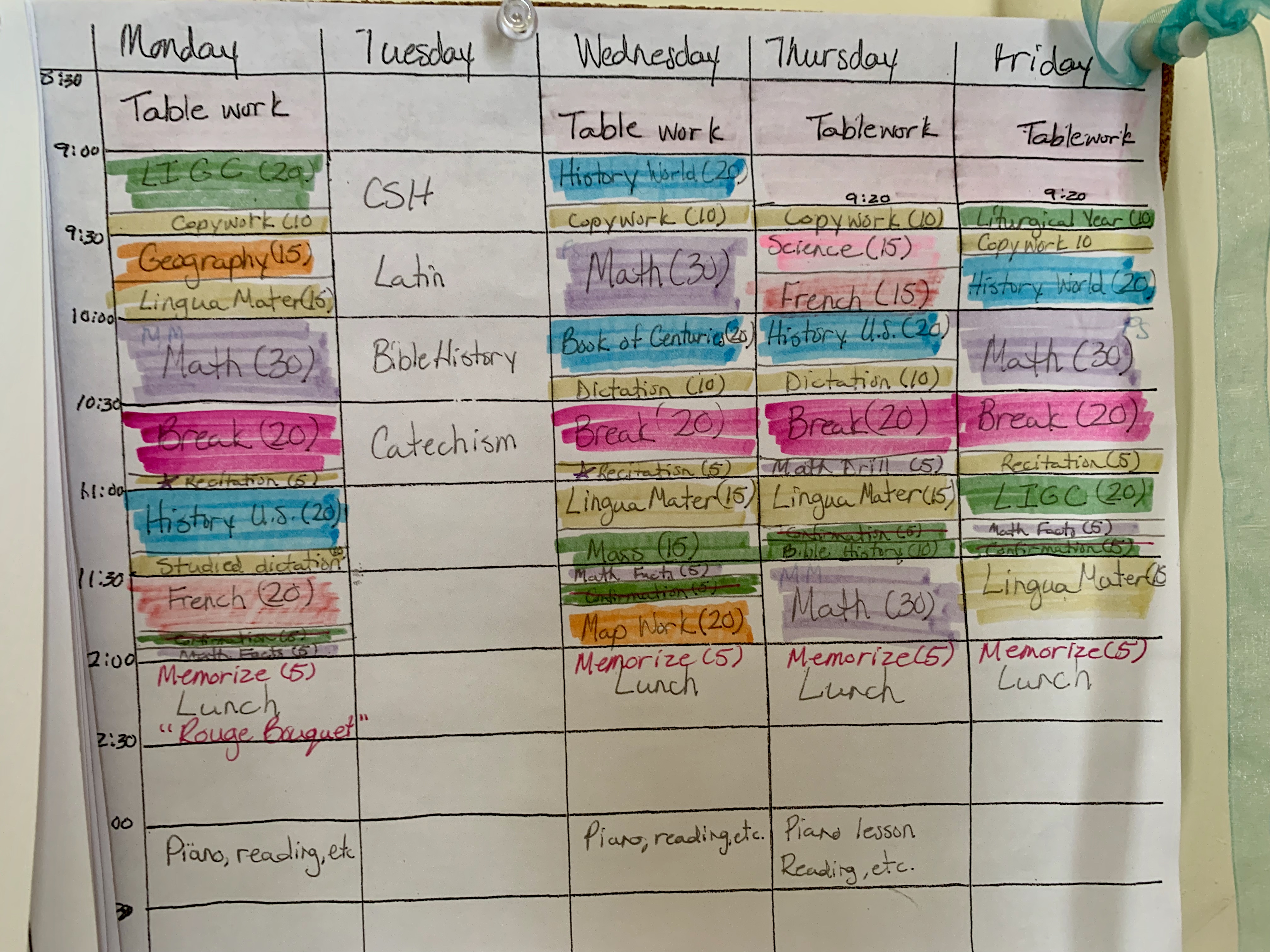
It turned out that we usually didn’t quite follow the schedule exactly, but we kept it close enough that they weren’t doing lessons into the afternoon each day.
My planning time changed in that, instead of sitting down every night and writing the next day’s work in notebooks, I would sit down every six weeks and fill out the girls’ schedules, using those provided on the Mater Amabilis website for guidance. They ended up like this:
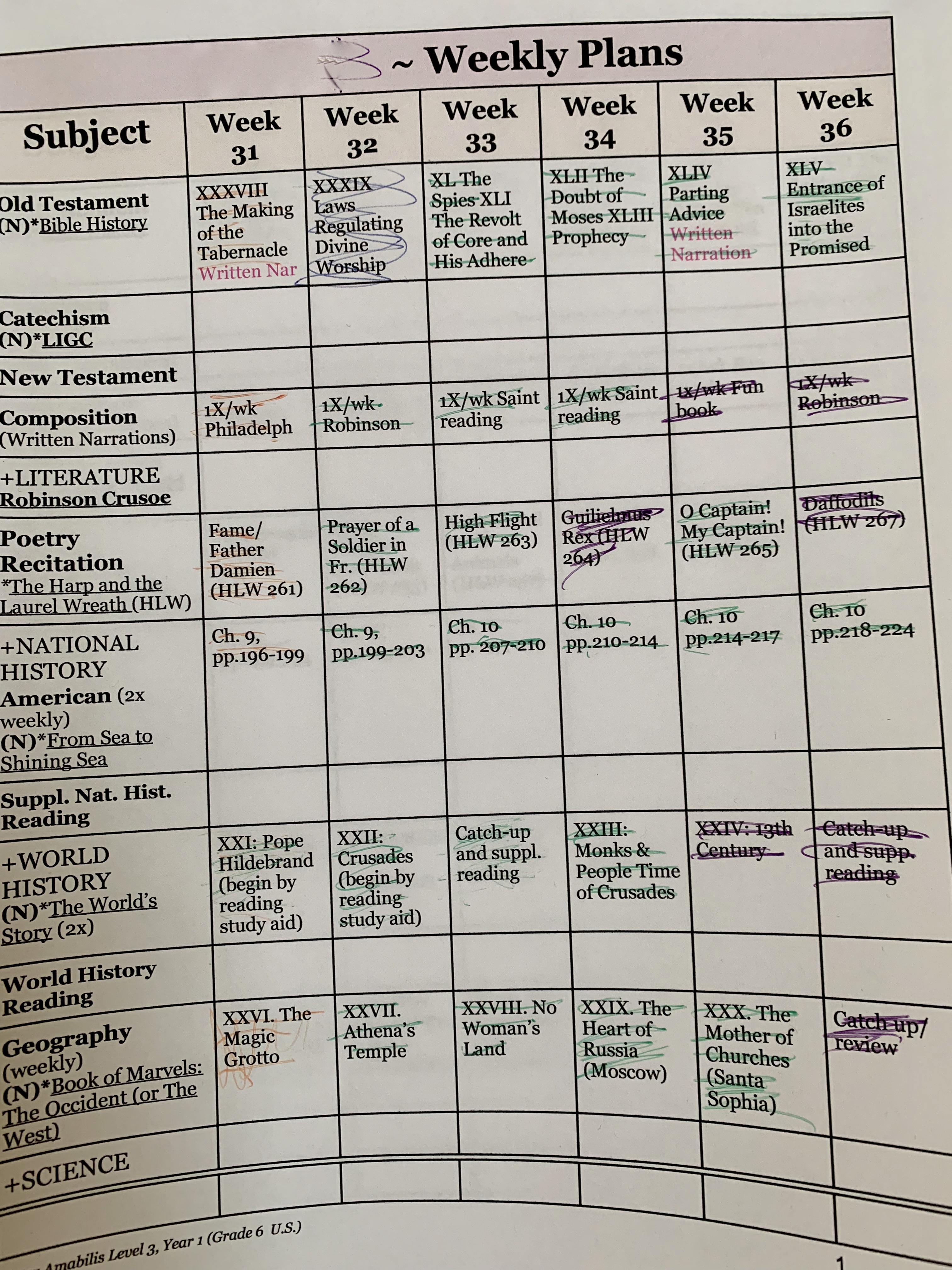
For some subjects (like catechism, “Living in God’s Church”), I did not assign particular pages. Instead the girls would read for the time allotted on their schedule (20 minutes if you look above at the schedule for LIGC), leaving enough time for a narration before moving on to the next thing. Mostly this was because I didn’t use the Mater Amabilis books/schedule for this subject and I wasn’t sure how many pages to assign, so it was easier to just have them read for a set time instead of a set number of pages. Each girl had both of these pages on a bulletin board strip above her desk, along with a white board where I could write notes for them for each day if needed.
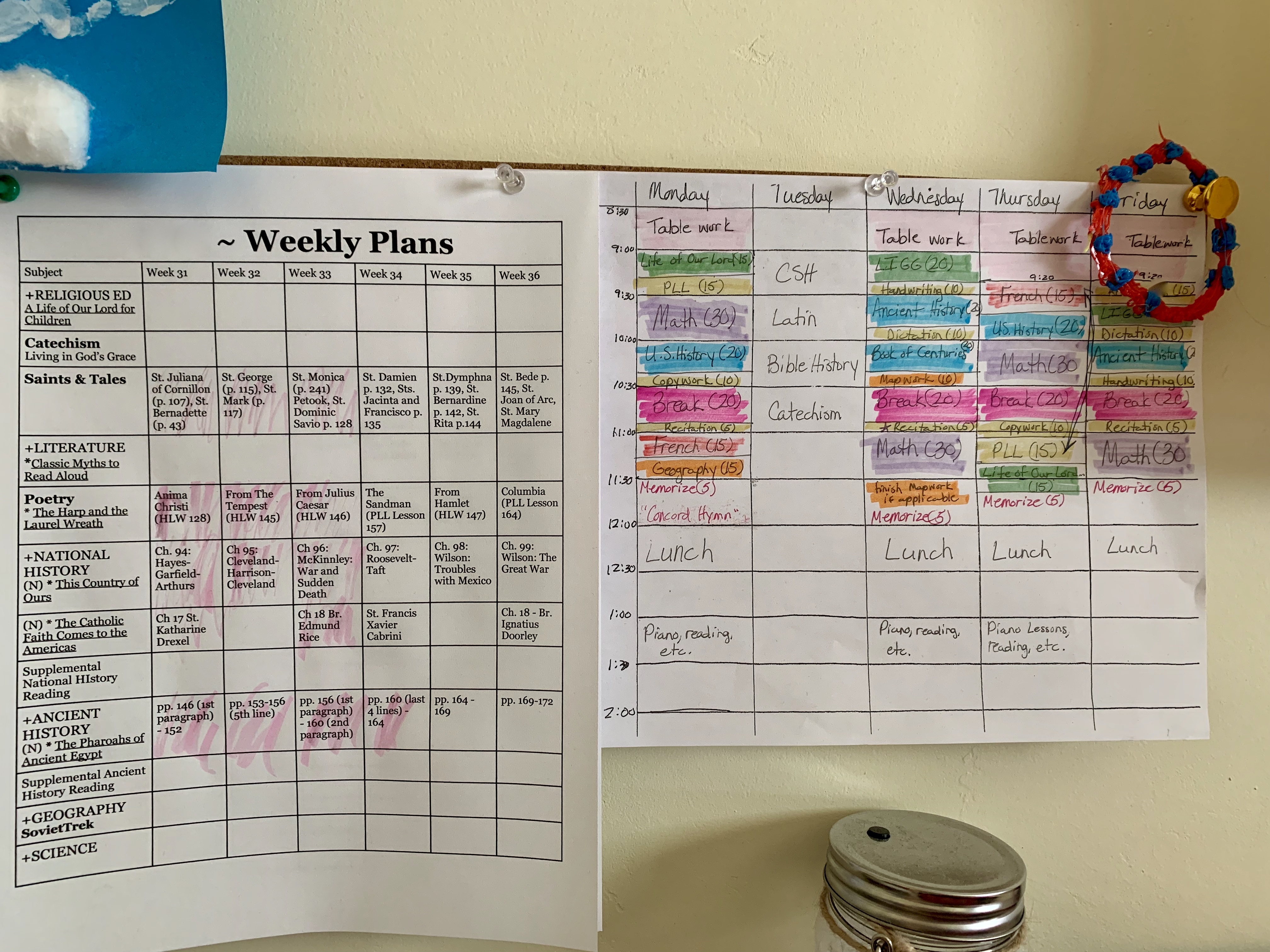
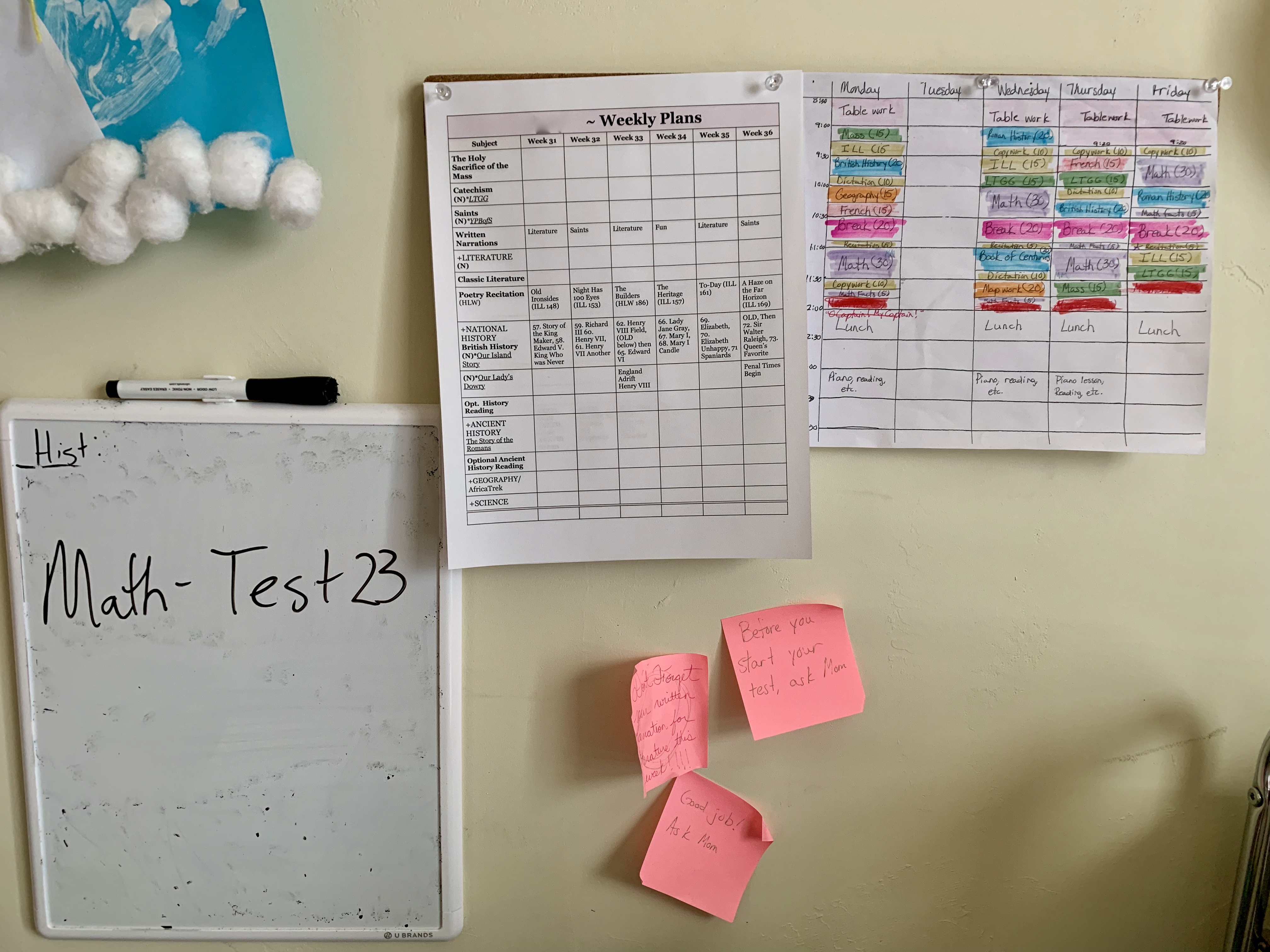
At the beginning of the year I blocked out a plan for myself to make sure I wasn’t scheduling girls to do subjects that they needed my help with at the same time. Mostly I just worked with them on math and dictation, and listened to recitations, so those are the things I blocked out. It looked like this:
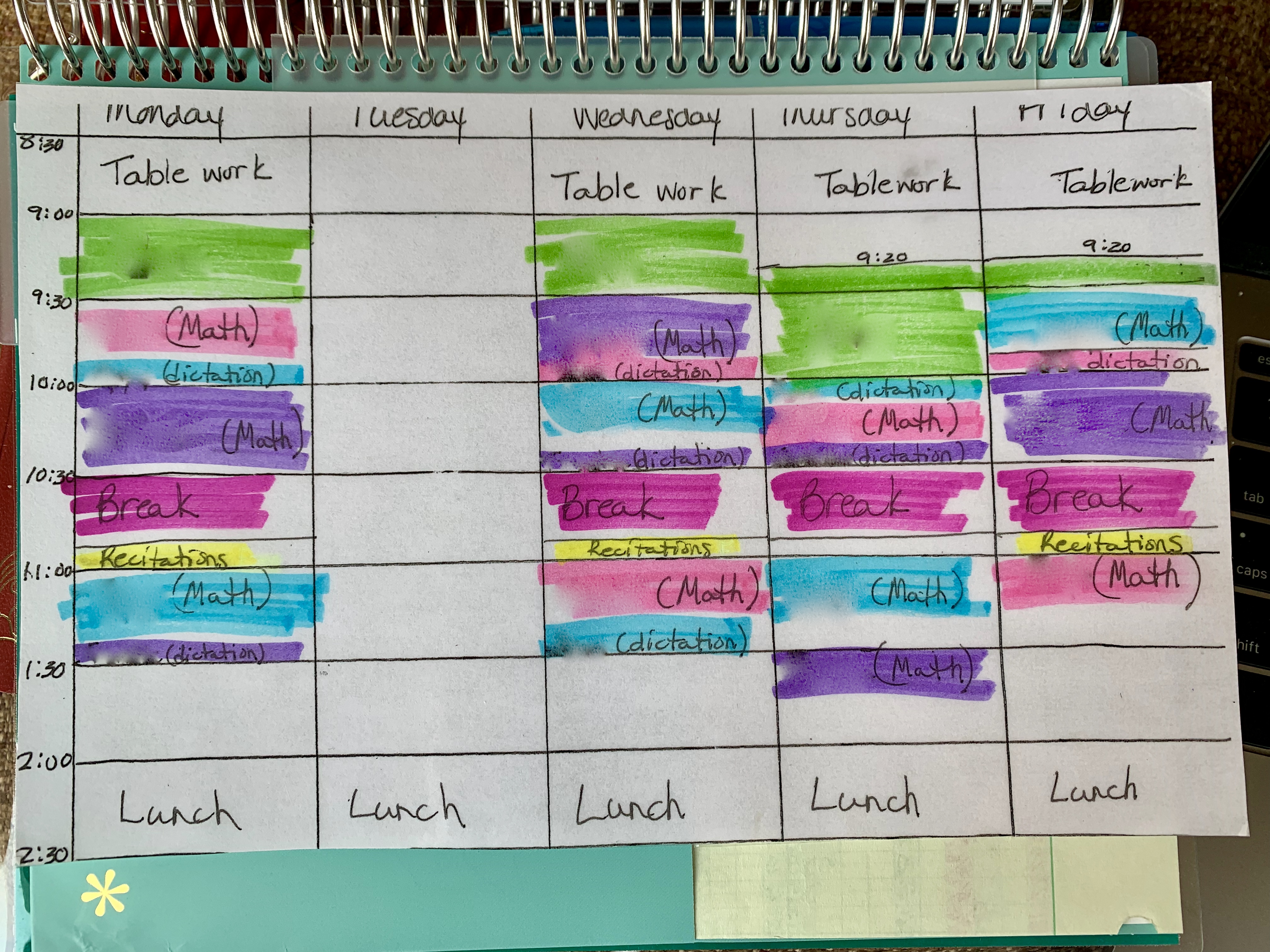
The girls were able to move through their work on their own each day. It really helped to have smooth and easy days and a successful year.
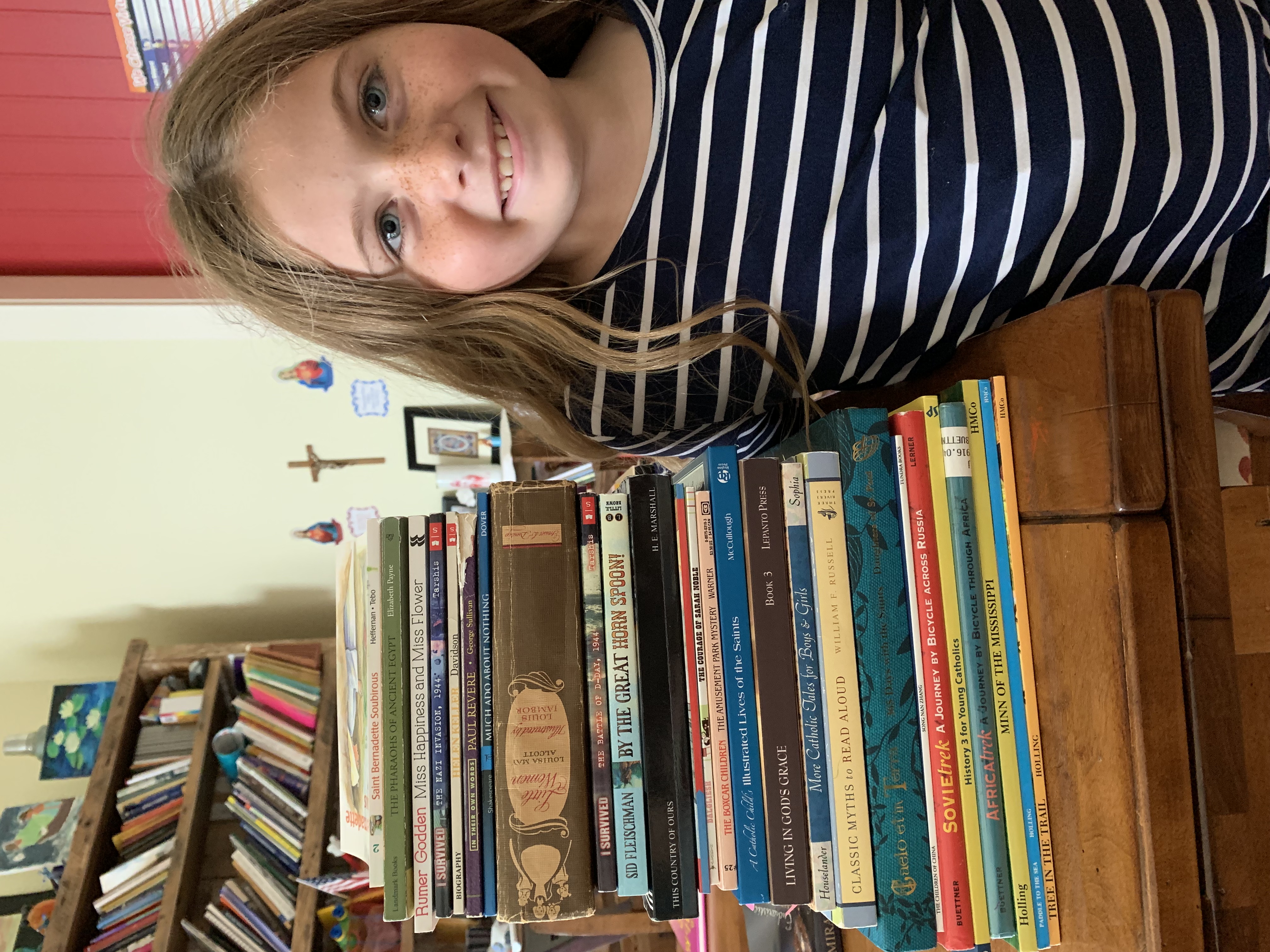


I have a few things I need to tweak for this coming year. I talked with the girls to find out which subjects they felt like they needed more or less time for in their schedules, and I’ll adjust accordingly. I’ll need to figure in more time with Bubba since he’s starting kindergarten this year (!). I need to increase and strengthen the habit of good written narrations. And there are plenty of other areas to improve this year, but it sure is nice to have finally found a curriculum, a method, and a system that works well for our family. Took me long enough!
_________________________________________________________________________________________________________________________
Here are the different sources I used to help get started last summer:
Mater Amabilis website and Facebook page (the moms who run the Facebook page are so helpful!)
Simply Charlotte Mason podcast, blog (great book lists), and bookstore
Karen Glass books Consider This: Charlotte Mason and the Classical Tradition and Know and Tell: The Art of Narration
The Charlotte Mason Show podcast
A Delectable Education podcast

